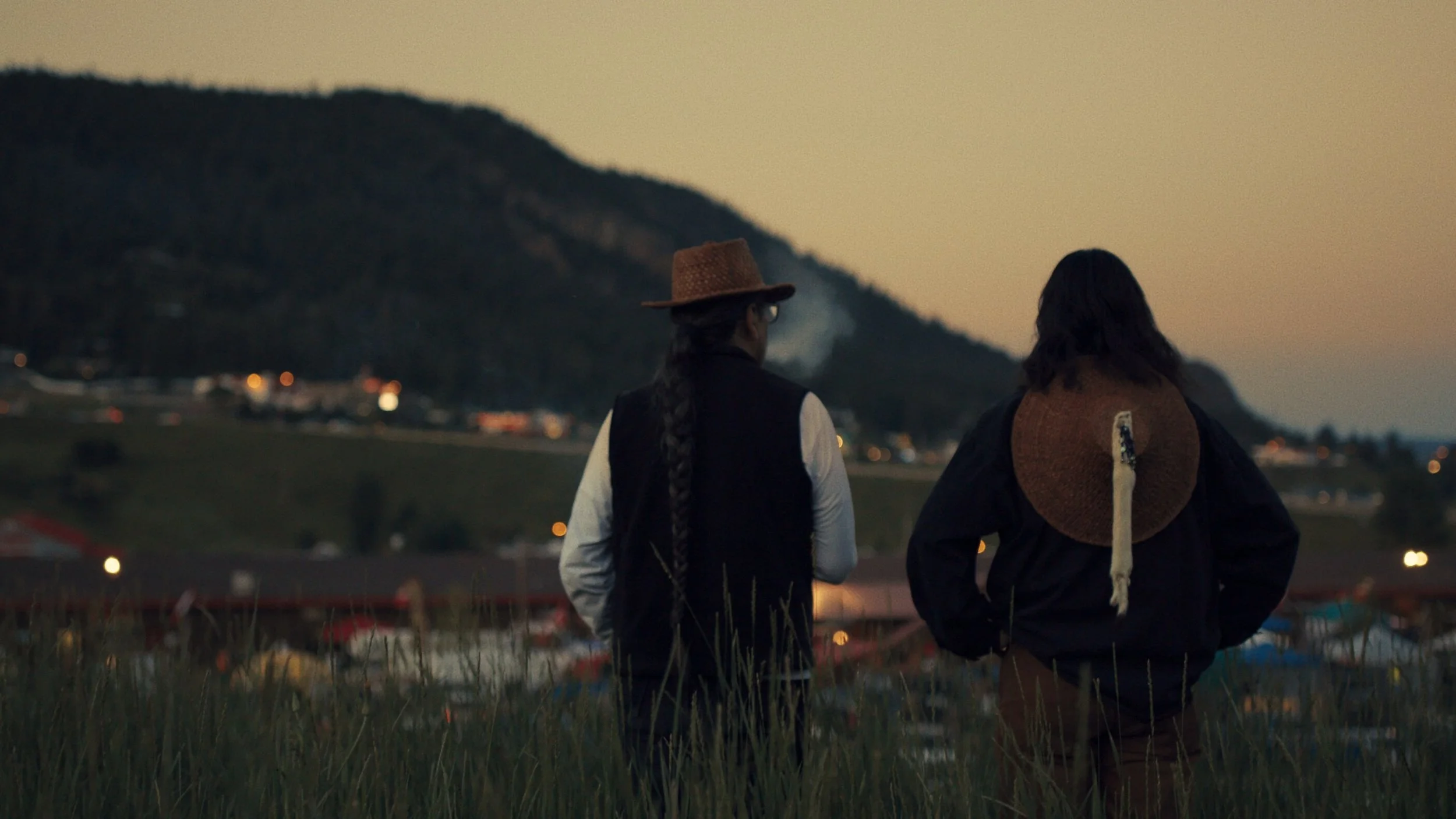Film review: Sugarcane documentary brings moving humanity to the horrors of a B.C. residential school
Premiering at VIFF Centre and the Squamish Lil'wat Cultural Centre, remarkable film about the dark legacy of Williams Lake institution wields quiet power
Ed Archie NoiseCat and his son, documentary filmmaker Julian Brave NoiseCat in Williams Lake in Sugarcane.
Sugarcane screens at Squamish Lil’wat Cultural Centre in Whistler on August 22; and at VIFF Centre from August 23 to September 1, with filmmakers in attendance on August 23
IN THE LOFT of an abandoned barn outside Williams Lake, children and teens have carved or inked their initials in the slats and beams—sometimes with a year (1949, 1956), sometimes with the designated number that replaced their names, and sometimes with an inscription. “73 days till hometime for the Boys,” a particularly heartbreaking one reads.
In Sugarcane, from documentary filmmakers Julian Brave NoiseCat and Emily Kassie, the inscriptions offer a deeply moving dimension to what went on at St. Joseph’s Mission residential school—especially when we learn the barn was the site of sadistic beatings by the nuns and priests who ran the infamous facility. They illustrate the quiet power of a remarkable film that brings humanity, sensitivity, and a bracing concreteness to an issue sometimes abstracted by numbers. “We were here,” these voices from the past assert, “and we won’t be forgotten”—even if many of the people who wrote them are long gone.
Sugarcane, premiering this week at both Squamish Lil'wat Cultural Centre in Whistler and VIFF Centre in Vancouver, has been attracting widespread coverage since it won the documentary directing prize at the Sundance Film Festival. With its mix of investigative research, empathy, and personal storytelling, it stands among the most important films made on the subject to date—and it’s already raising awareness of the legacy of residential schools on an international scale. That it is shot with haunting, poetic moments—flickering light illuminating the barn at twilight, hands in extreme closeup carving wood, the shadow of a powwow dancer shaking his headdress—makes it even more compelling.
NoiseCat and Kassie adeptly interweave storylines. On one level, the film follows the personal journey of filmmaker NoiseCat, showing affecting vulnerability as he reconciles with his father, artist Ed Archie NoiseCat. He travels with his father back to Williams Lake to a past he has long suppressed, as a rare survivor of one of the darkest practices at the Catholic-run institution.
Sugarcane also follows the painstaking investigative work by survivors, led by Williams Lake First Nation elder Charlene Belleau, to pore through school records, dig up old newspaper articles, and even track down the last living priest from St. Joseph—all while crews use ground-penetrating radar to find unmarked graves on the St. Joseph’s site. Along the way, the elders share painful memories of abuse at the institution—and show how no one was ever held accountable, despite evidence of everything from drownings to suicides while it ran to 1981.
In yet another thread, Sugarcane profiles two chiefs. Chief Willie Sellars receives hate mail after leading an inquiry into St. Joseph’s history. The older Chief Rick Gilbert travels as part of a delegation seeking redress from the Vatican—with evidence his own father was a priest.
Some of the film’s most affecting moments dig at the way trauma lies beyond words—and the way it’s been held in silence. NoiseCat’s own father, and especially his grandmother, are often rendered speechless when trying to give voice to what happened to them—a fact that’s more powerful than any narrator trying to sum up the tragedy. At the same time, Sugarcane shows how deeply intergenerational trauma embeds itself, but also how expressing the truth can release and heal people. “I want to know the whole story,” Julian implores. “It’s kinda like it just keeps on damaging,” his father says—perfectly summing up how much work remains to be done around truth and reconciliation.
Sugarcane also captures resilience—whether that’s Sellars teaching his children to fish off the rocks of the Williams Lake River, or Julian Brave NoiseCat winning a prize at a powwow dance. (“Holy shit!” the journalist and author exclaims endearingly, hearing the announcement as he packs away his regalia to drive home.)
Back in that abandoned barn loft, Belleau holds a smudge ceremony and tearfully tells Julian, “Our elders are now looking to you to tell our stories….You’re going to make sure that people are held accountable.” You can tell from the look on NoiseCat’s face how he feels the weight of that burden in this painful place, surrounded by the names carved on the walls. It’s a huge credit to him and Kassie for living up to that request with a film that finally does the elders justice. ![]()
The former site of St. Joseph's Mission residential school in Sugarcane.















